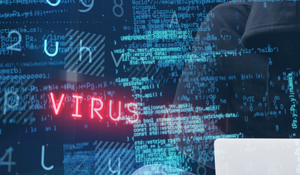Is the Fileless Malware Trend Here to Stay: The Possibilities in 2023

Cyber-attacks have been a mainstay of the digital world for many years now, and their prevalence is only increasing with the advancements in technology. Recently, the emergence of fileless cyber-attacks has been a major cause for concern. This type of attack is especially dangerous as it is harder to detect. In the past, a common method of detecting malware was by creating “signatures” to recognize the downloaded file on the disk of the system. This is the basic role of an antivirus. But as the name suggests, fileless malware does not leave any traces on the disk, meaning that detection is more difficult. As such, it is important to examine the current state of fileless Malware, and speculate on the potential of this trend in 2023. What is the likelihood of fileless attacks becoming more widespread and harder to detect in the near future? In this article, we will discuss the possibilities of the fileless Malware attacks trend in the year 2023.
What is a fileless cyber-attack?
While many cyber-attacks require files to be downloaded to disk, a fileless cyber-attack does not. Instead, a fileless Malware uses existing programs and applications on a computer to gain access to a system. These attacks remain completely in memory (RAM) and for that reason, traditional antivirus disk scans will not detect them. The attack involves causing an existing, legitimate program on the target system to run malicious code, allowing the attacker privileges such as data theft, data encryption or spying capabilities.
The current state of fileless Malware
While fileless Malware attacks were reported as early as 2015, they were initially considered to be an anomaly. However, this type of attack has now been observed as a rising trend in recent years. This is because of the effectiveness of traditional antiviruses in detecting file based malware. As a result, some organizations have adopted new and advanced detection techniques, and have become more vigilant in protecting themselves against such attacks, which has led to an increase in their detection rate. This is especially important in the business sector, where fileless attacks are most prevalent.
Predictions for fileless Malware attacks in 2023
Fileless malwares have proven to be a dangerous trend, and are likely to become more common in the coming years. While fileless malwares have been rising over the past few years, their usage is expected to increase significantly. What types of cyber-attacks are most likely to be fileless attacks? The most common cyber-attacks that are fileless are remote access attacks, spyware and network infiltration. These types of cyber-attacks often use legitimate programs such as a web browser to gain remote access.
Possible measures for protection against fileless Malware attacks
There are several ways that a person or organization can protect themselves from fileless malware. First, make sure that you are keeping your devices’ software up to date. This will help to protect against cyber-attacks using disclosed vulnerabilities that have been patched by the vendor, including fileless ones. Additionally, use EDR software on your devices to protect against malicious programs that can be used in fileless cyber-attacks. This will monitor processes and connectivity on a device and look for suspicious activity, such as malware attempting to elevate privileges. Once a malware has been detected, the EDR can stop most of these attacks. Like any other solution, traditional EDRs have limitations and cybersecurity industry leaders have been trying to develop solutions able to overcome the limitations. Nevertheless, If you notice your devices acting suspiciously, don’t ignore it. It could be the sign of a fileless cyber-attack.
Conclusion
The rise of fileless malwares is a cause for concern. This type of attack does not require any malicious files to be downloaded, instead using existing programs and applications to gain access to a system. As such and due to its speculated increase in use, it is important to stay ahead of the threat and protect your assets using all means.
